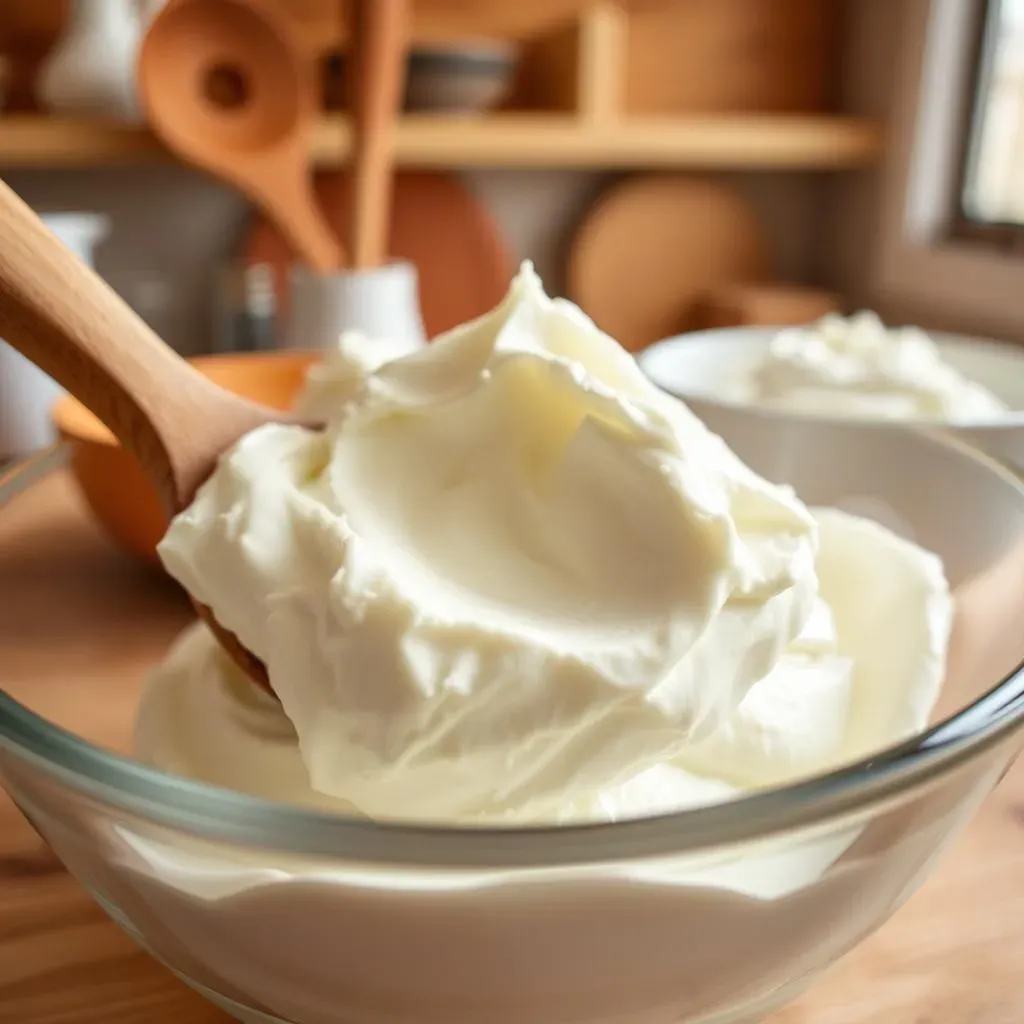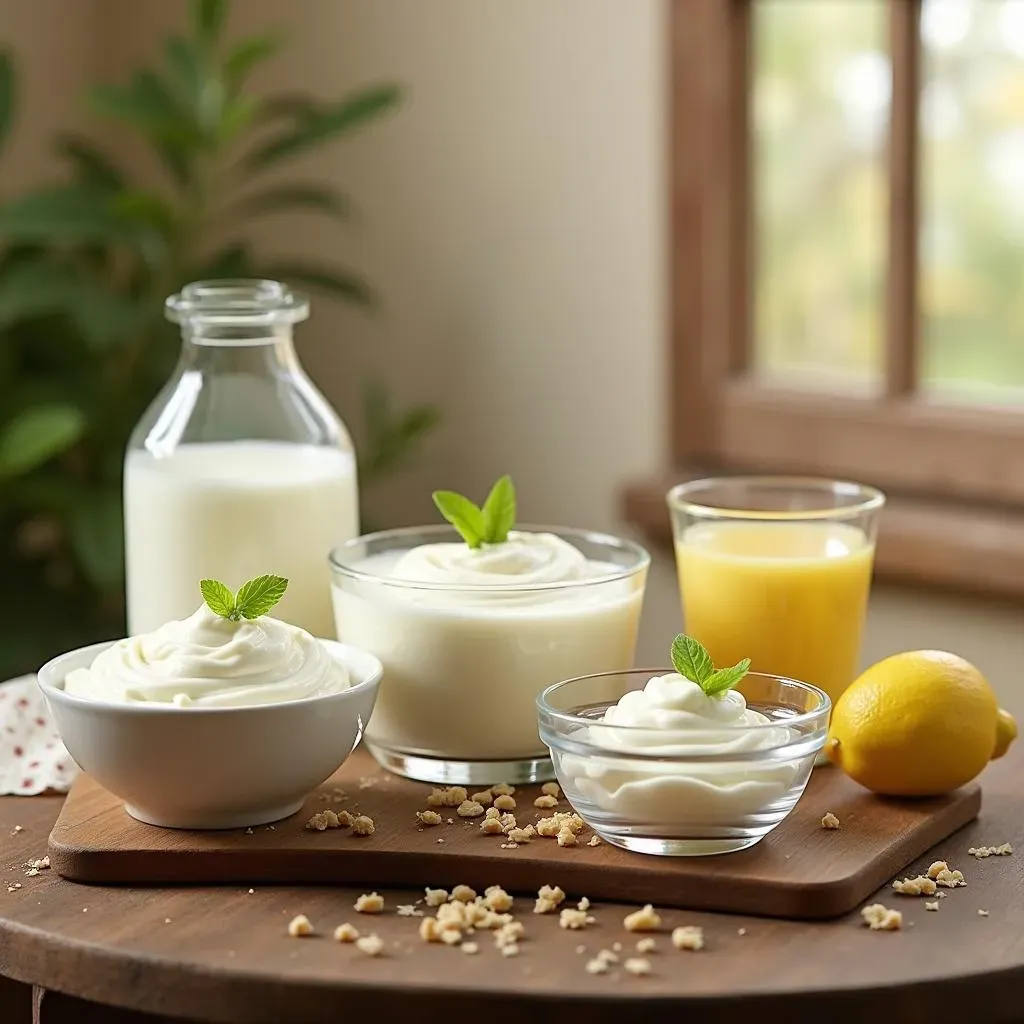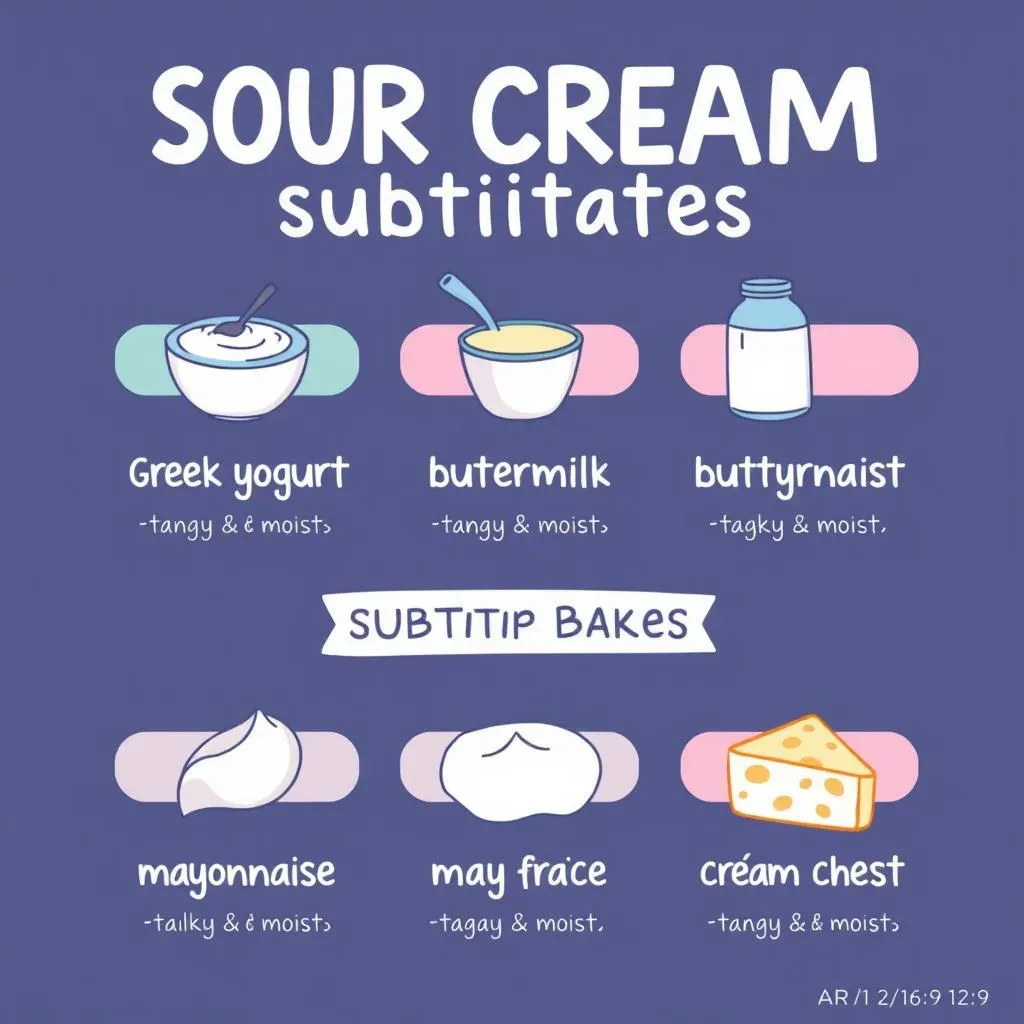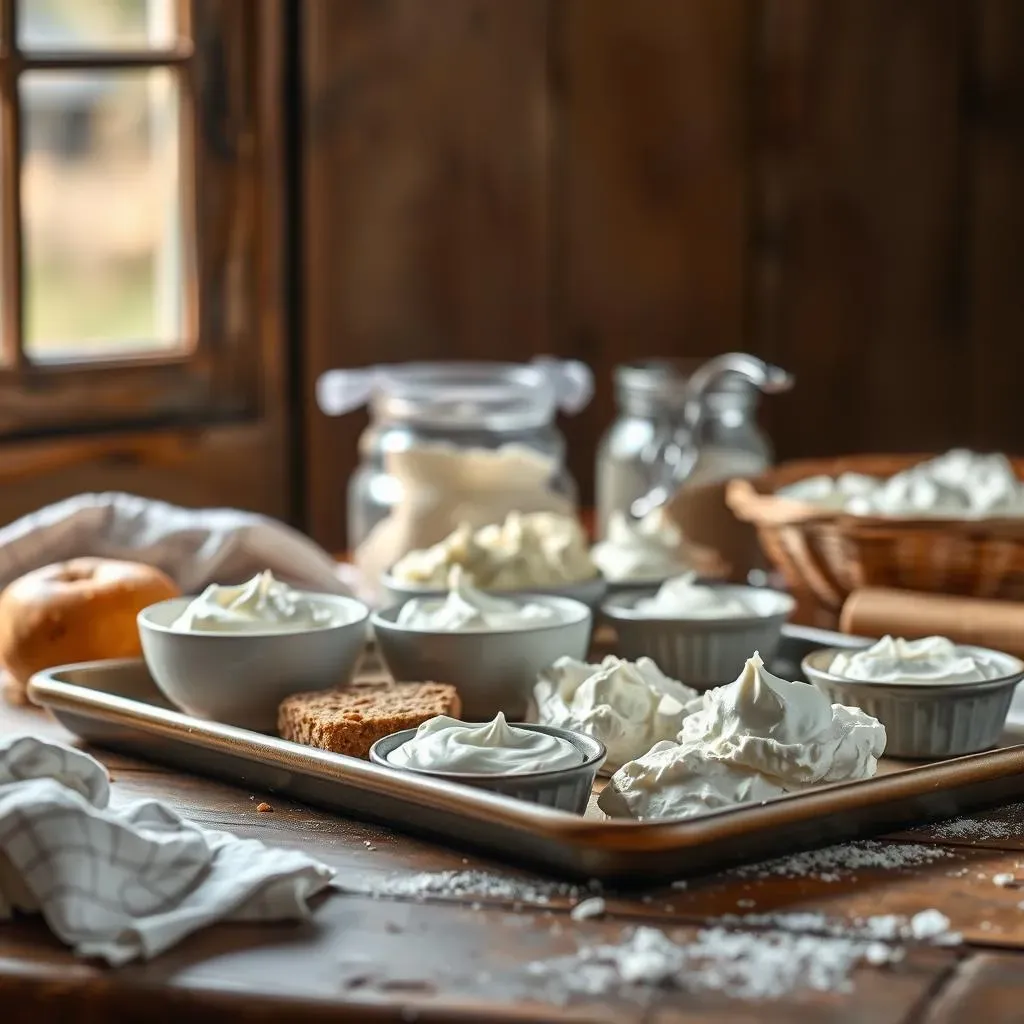Table of Contents
Ever found yourself mid-recipe, only to realize you're fresh out of sour cream? It’s like discovering you’re out of gas on the way to a party – a total bummer! Sour cream is the unsung hero in many recipes, adding moisture, tang, and richness that can make or break a dish. But fear not, fellow bakers! If you are wondering "what is a good substitute for sour cream in baking?", you've come to the right place. This article is your go-to guide for navigating the world of sour cream alternatives. We'll explore ten fantastic substitutes that can save your baking projects. From creamy yogurts to tangy mayos, and even some DIY options, you'll learn how to swap sour cream like a pro. We will show you how to choose the right substitute and give you some tips and tricks so you can keep baking without missing a beat. Get ready to discover how easy it is to keep your baking game strong, even without sour cream!
Why Sour Cream is a Baking MVP

Why Sour Cream is a Baking MVP
Okay, so you're diving into the world of baking and wondering why everyone is so obsessed with sour cream? Let me tell you, it's not just because it sounds fancy. Sour cream is like the secret weapon of baking, it does more than just add a bit of tang. It’s a real MVP because of its unique combo of fat and acid. The fat content is what gives baked goods that lovely tenderness, stopping them from being dry and crumbly. Think of a cake that melts in your mouth, or a muffin that's super moist; that's often thanks to the fat in sour cream. Then, the acid not only gives that signature tang but also helps activate baking soda, which is what gives your cakes that perfect rise. It's a double whammy of goodness that makes baked goods better. That little tub of creamy goodness is working hard to make your cakes, muffins, and even cookies so good.
Top 10 Sour Cream Substitutes for Your Recipes

Top 10 Sour Cream Substitutes for Your Recipes
The Yogurt All-Star
First up, we've got Greek yogurt. It's the superstar substitute, and I'm not just saying that. It’s got a similar thickness and tang to sour cream, making it a pretty seamless swap. You can use it in a 1:1 ratio, so if your recipe calls for a cup of sour cream, just use a cup of Greek yogurt. Seriously, it’s that easy. I use it all the time when I'm making muffins or cakes, and no one can tell the difference. It’s also packed with protein, which is a nice bonus. If you're looking for the closest match, this is your go-to.
Mayo Magic
Next, let's talk about mayonnaise. Now, I know what you’re thinking: “Mayo in baking?!” But hear me out. Mayonnaise is basically eggs and oil, which means it has the fat content to keep things moist, just like sour cream. However, mayo lacks the tang that sour cream brings to the table, so it's not a perfect substitute, but in a pinch, it works. It’s best used in recipes where you need the moisture, and the tang isn't super critical, like in some chocolate cakes or quick breads. I'd recommend starting with about half the amount the recipe calls for in sour cream and then adjusting as needed. It’s a good option when you're in a bind, but don't expect the same zesty flavor.
Substitute | Ratio | Best Use |
|---|---|---|
Greek Yogurt | 1:1 | Most baking recipes |
Mayonnaise | Start with half | Moisture in cakes and breads |
The Rest of the Crew
Okay, we've covered the big hitters, but there are still others to consider. Buttermilk is a great one, it adds that nice tang, but it’s thinner, so you might need to tweak your recipe a bit, maybe adding a bit more flour. Then, we've got crème fraîche, which is like a richer version of sour cream, and it works wonders if you want to add extra decadence to your baking. Cream cheese is another solid choice; it’s thick and creamy, but it’s also denser, so keep that in mind. Don't forget about DIY sour cream: mix milk and lemon juice, and boom, you have a quick substitute! Finally, there's kefir, Mexican crema, cottage cheese, and even coconut milk for the dairy-free folks. Each one brings something unique to the table, so don't be afraid to experiment and see what works best for your baking style.
How to Choose the Best Substitute for Sour Cream in Baking

How to Choose the Best Substitute for Sour Cream in Baking
Okay, so you've got your list of substitutes, but how do you actually pick the right one? It's not just about grabbing the first thing you see in the fridge. The secret lies in thinking about what your recipe needs. If you're aiming for that classic tang and richness, Greek yogurt is almost always a safe bet. But if you're making a chocolate cake where the tang isn't the star, mayo can work its magic, adding moisture without messing with the flavor profile. And what if the recipe is something like a quick bread? Buttermilk might be your hero, just be ready to adjust the liquid content a bit. It's all about understanding the role sour cream plays in your recipe and then choosing a substitute that can mimic those properties.
Baking Goal | Best Substitute |
|---|---|
Tangy flavor & moisture | Greek Yogurt, Buttermilk |
Richness & moisture | Crème Fraîche, Cream Cheese |
Moisture only | Mayonnaise |
Don't worry, it's not rocket science, think of it like choosing the right tool for a job. If you need to lift something heavy, you wouldn't grab a feather, right? Same goes for baking. If you need the tang, go for the yogurt or buttermilk. If you need the richness, crème fraîche or cream cheese will be your friend. And if you're just looking for that moisture, mayonnaise is your secret weapon. Don't be afraid to try different things and see what works for you. After all, baking is an adventure, and even if you don't get it right the first time, you'll learn something new for your next baking session!
Baking with Sour Cream Alternatives: Tips and Tricks

Baking with Sour Cream Alternatives: Tips and Tricks
Adjusting for Texture
Alright, so you're ready to bake with those sour cream substitutes, but hold on a sec! It's not always a straight swap; you need to think about texture. Some substitutes, like buttermilk, are thinner than sour cream, so you might end up with a batter that's a bit too runny. No panic though, you can easily fix this by adding a bit more flour to your recipe, like a tablespoon at a time, until you reach the right consistency. On the flip side, if you're using something like cream cheese, which is thicker, you might need to add a splash of milk or even some water to thin it out. It's all about finding the sweet spot – that perfect batter consistency that will bake up just right.
I remember this one time I was making a cake and used Greek yogurt, and the batter was just a little too thick. I added a bit of milk, and it worked like a charm. It's always good to have a little extra liquid on hand, just in case. Don't be afraid to play around with it a bit; baking is a science, but it's also an art!
Flavor Balancing Act
Now, let's talk flavor. Each substitute brings its own unique taste to the party, and you need to keep that in mind. Greek yogurt is tangy, but it's not as tangy as sour cream, so if you're looking for that extra zip, you might need to add a touch of lemon juice or vinegar to your recipe. Mayonnaise, on the other hand, is more savory than tangy, so if you use it, you might need to adjust other flavors to balance things out. And don't forget about the richness of crème fraîche or cream cheese. They can make your baked goods extra decadent, but they might also overpower other subtle flavors. The key is to taste as you go and adjust the other ingredients as needed.
Substitute | Flavor Adjustment |
|---|---|
Greek Yogurt | Add lemon juice or vinegar for more tang |
Mayonnaise | Balance savory flavor |
Buttermilk | May need to adjust sweetness |
Crème Fraîche | Be mindful of richness |
Don't Be Afraid to Experiment
Okay, here's the most important tip of all: don't be scared to experiment! Baking is all about trying new things and learning from your mistakes. Maybe you'll discover that you love the way a specific substitute changes the flavor or texture of your favorite recipe. Perhaps you'll come up with a new baking hack that no one else has thought of. The best bakers are always the ones who are willing to push the boundaries and try new things, so don't let the fear of failure hold you back. And remember, even if things don't turn out perfectly, you can always eat the evidence! So, grab your ingredients, pick a substitute, and get baking! You've got this!
I've had some baking fails, but those are usually the times I learned the most. So embrace the process and enjoy the journey. Who knows, you might just discover your new favorite baking trick!